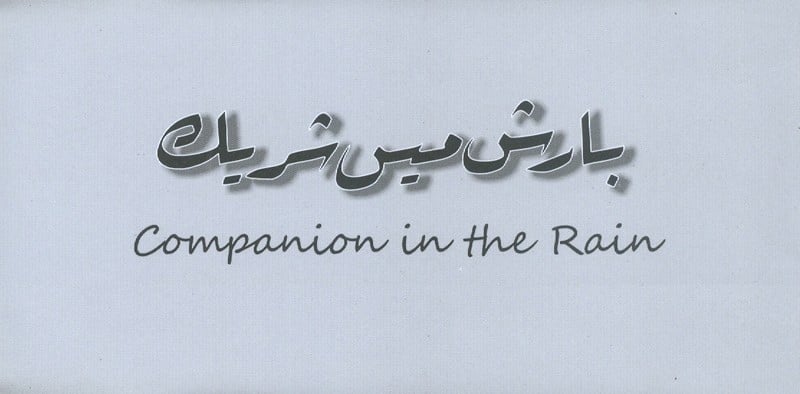
Ata Turab’s poetry stays with you and when you come back to it, it will say more to you than it did the first time

Samuel Taylor Coleridge (1772-1834) described poetry as the arrangement of "the best words in the best order". The English poet, literary critic, and philosopher who composed The Rime of the Ancient Mariner and Kubla Khan was being economical with his words, and in that brevity lies the beauty of poetry.
But what about paintings?
Taking a clue from Coleridge, one can probably say that a painting presents "the best strokes with the best colours".
Here we have a poetry collection by Ata Turab that is not only ornamented by paintings but also translated into English by Faiza Khan. There are Urdu poetry collections with translations in English, and there are translations adorned with paintings (such as Rubaiyat-e-Omar Khayyam); but one rarely comes across a volume that contains both i.e. the translations and paintings along with the original verses.
Ata Turab is in his late 30s and can be bracketed with that hackneyed term of a ‘new generation of poets’; but the maturity of thought in his verses renders that term meaningless in his context. His postgraduate studies in Arabic and Persian have enabled him to compose poetry that is rich in tradition and bold in imagination;
just look at this:
This thin volume contains his nazms and ghazals; most of the poems are accompanied by translations and paintings but only a few ghazals have this privilege.
It seems that for this collection, the nazms are so chosen that they relate to each other in various ways: they echo sounds in something that one might call harmony and sometimes appear to have a deliberately discordant effect; they are showcased to qualify each other in some subtle way and contain allusions, and at other times give rise to different images than they could produce singly. For example, A Leaf from Gul-e-Haya’s Diary is dedicated to Malala Yousufzai; it laments the barbarity that has settled in our homes and schools, in places of worship and in picturesque valleys:
Obscene it is when petals smile to become a flower.
It’s legal to delight only behind the veil of leaves.
In the third part of the nazm section, probably the best poem is Marital Rape; a matter absolutely abhorred by religious scholars and patriarchs alike. By carefully selecting words, Turab induces the whole to mean more than the separate parts. His poetry consists of an essential rightness and flow and balance in the phrasing. Most of his poetry cannot be read without arousing some emotion in the reader; as Dylan Thomas once pointed out that a "good poem helps to change the shape and significance of the universe, helps to extend everyone’s knowledge of himself and the world around him…"
About the ghazal part, one is inclined to admit one’s inherent preference for this form of poetry, not because other poems are of any less significance but probably thanks to ghazal’s more melodious rhymes, just look at this couplet:
Some of his ghazals are so masterfully crafted both in meaning and form that Mirza Yaas Yagan Changezi come to mind. For example:
Or
It seems impossible to understand his poetry and not be affected by it. In fact with a perfect understanding you can draw these poems as well as done by Faiza Khan. She has been meticulous about selecting her paintings to match Turab’s poetry; you will find black and white sketches and water colours and even some that appear to be oil paintings, all complementing the poetry they are juxtaposed with.
Turab’s poetry stays with you and, like with all good poetry, when you come back to it, it will say more to you than it did the first time. His verses illuminate their subject and move you with their message of rationality. ; to conclude, a few more lines should suffice to make my point clear: